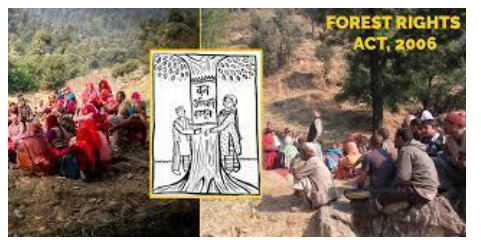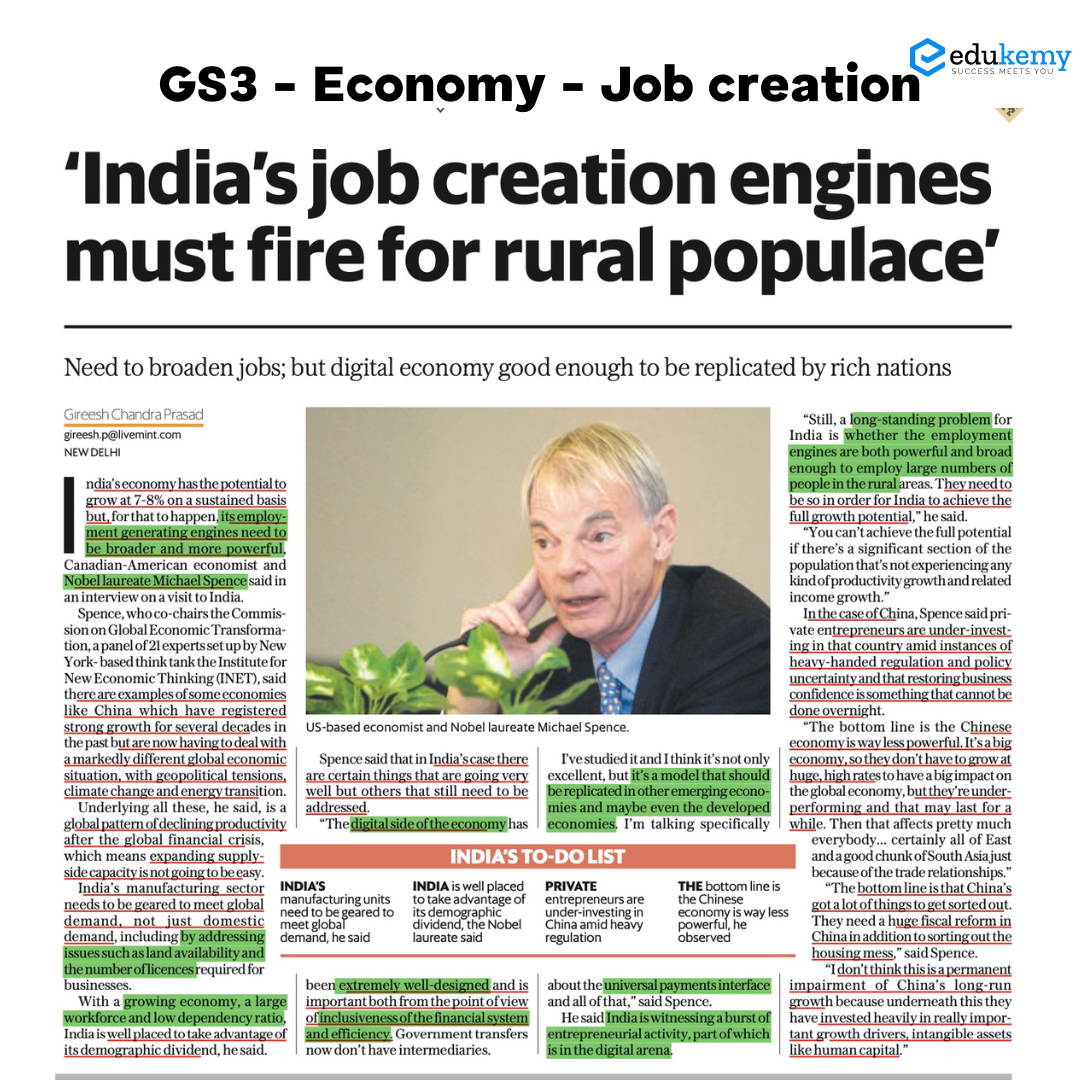Friday, 16th February 2024
India Faces WTO Pressure on Farm Subsidies
In News: The Government of India has a constrained capacity to fulfill the protesters' farmers demand for a legal assurance of the minimum support price (MSP).
Challenges Confronting India’s Agricultural Subsidy Programs in the WTO
- Unfavorable WTO Rules for Developing Countries
- India's per-farmer subsidy is considerably lower than that of countries like the US.
- WTO rules, however, do not account for subsidies on a per-farmer basis, disproportionately impacting developing nations.
- Exceeding Subsidy Limits
- India's total rice production in 2019-20 exceeded the 10% limit, reaching $6.31 billion in subsidies, making it susceptible to challenges.
- Despite a low per-farmer subsidy of $300 compared to $40,000 in the US, India faces WTO scrutiny.
- Protection Through 'Peace Clause’
- India is shielded by the 'Peace Clause' agreed upon during the 2013 Bali ministerial, preventing disputes over existing subsidies.
- Ambiguities in the clause, however, expose India to potential disputes if new schemes are introduced.
- Cairns Group's Allegations
- The Cairns Group, including Australia, Brazil, and Canada, contends that India's public stockholding program distorts global food prices and harms other nations' food security.
- Proposals by the Cairns Group aim to reduce trade-distorting farm support globally, creating tensions with India.
- Pressure for MSP Program Protection
- India resists dismantling the Minimum Support Price (MSP) scheme, seeking legal protection against external pressures.
- The government faces challenges reconciling WTO peer pressure with domestic demands for robust MSP support.
- Deadlock at Inter-Ministerial Summit
- Efforts for a permanent solution and greater flexibility in farm support face deadlock in inter-ministerial summits, with developed-developing country disputes persisting.
- Farmers' Demand for WTO Exit
- Some farmer groups advocate removing agriculture from the WTO, posing challenges for India's ability to discipline subsidies from developed nations.
- Balancing Peer Pressure and MSP Demands
- The government navigates a delicate balance between WTO obligations and demands for enhanced MSP support from farmers.
- Food Security Threats
- A potential shift away from agriculture by Punjab and Haryana farmers poses risks to the country's food security.
- Advocating for Policy Amendments
- India strives to amend WTO food subsidy cap calculations and extend the 'Peace Clause' to cover programs implemented post-2013.
Source: IE
Female Genital Mutilation
In News: UN agencies have reported that approximately 4.4 million girls worldwide are in danger of undergoing female genital mutilation in the year 2024.
Understanding Female Genital Mutilation (FGM)
- Definition and Recognition
- Female genital mutilation (FGM) encompasses non-medical procedures altering or injuring female genitalia, acknowledged internationally as a violation of human rights, health, and the integrity of girls and women.
- Prevalence Worldwide
- Concentrated in Western, Eastern, and North-Eastern Africa, as well as select Middle Eastern and Asian nations.
- Global concern due to increased migration, affecting girls and women in Europe, Australia, and North America.
- Impacts on Health
- Short-term complications include severe pain, shock, bleeding, infections, and difficulty in passing urine.
- Long-term consequences affect sexual, reproductive, and mental health.
- Status in India
- No legislation currently bans FGM in the country.
- Ministry of Women and Child Development, in response to a 2017 Supreme Court petition, cited the absence of official data supporting the existence of FGM in India.
- Unofficial reports suggest prevalence among the Bohra community in Maharashtra, Kerala, Rajasthan, Gujarat, and Madhya Pradesh.
Challenges in Eliminating FGM
- Cultural and Social Norms
- Deeply rooted in cultural and social norms, passed down through generations.
- Changing these entrenched beliefs poses a significant challenge.
- Lack of Awareness and Education
- Communities practicing FGM may lack understanding of its harmful consequences.
- Insufficient awareness and education contribute to the perpetuation of the practice.
- Data Collection and Reporting Challenges
- Limited data hinders efforts to comprehend the extent of FGM and implement targeted interventions effectively.
Global Initiatives for Eradication
- UN-Led Programs
- UN Population Fund and UNICEF co-lead a global program for FGM elimination since 2008.
- International Day of Zero Tolerance
- The UN General Assembly designated 6th February as the International Day of Zero Tolerance for Female Genital Mutilation in 2012.
- Aims to focus efforts on eliminating this practice.
- 2024 Theme: Her Voice. Her Future
- Aligned with the UN's goal for full elimination by 2030, following Sustainable Development Goal 5 (SDG 5.3).
- Targets the eradication of harmful practices, including FGM.
The Path Forward
- Legislation and Policy Enforcement
- Strengthen existing laws to explicitly ban FGM, with penalties for performers or facilitators.
- Governments should ensure effective enforcement through law enforcement agencies.
- Awareness and Education Campaigns
- Launch comprehensive campaigns to educate communities about the physical, psychological, and sexual health risks associated with FGM.
- Target individuals within practicing communities and beyond.
- Inclusion in Human Rights Framework
- Ground efforts to combat FGM in human rights principles, respecting the rights of women and girls.
- Advocate for the inclusion of FGM prevention and response measures in the international human rights framework.
|
UPSC Previous Year Questions Mains (2015) Q. Discuss the positive and negative effects of globalisation on women in India? |
Source: DTE
Bharat Ratna Awardees 2024
In News: The distinguished Bharat Ratna, India's highest civilian honor, will be awarded to five notable individuals for their outstanding contributions in politics, governance, and agriculture
Notable Contributions of Bharat Ratna Awardees (2024)
- Karpoori Thakur
- Served as Bihar's 11th Chief Minister twice, from 1970-71 and 1977-79, earning the title "Jan Nayak."
- Posthumously conferred the Bharat Ratna.
- Pioneered reservation for Other Backward Classes (OBCs), implementing the Mungeri Lal Commission's recommendations.
- Introduced a groundbreaking reservation model in 1978, allocating 26% reservations with specific quotas for OBCs, Economically Backward Classes (EBCs), women, and economically backward classes among upper castes.
- Advocated for marginalized communities' rights, emphasizing social justice and inclusive development.
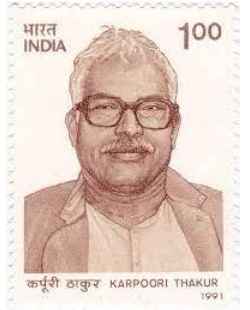
- Mankombu Sambasivan (MS) Swaminathan
- Revered as the 'Father of India’s Green Revolution.'
- Posthumously conferred the Bharat Ratna.
- Collaborated with Norman Borlaug to develop high-yielding wheat and rice varieties, revolutionizing Indian agriculture.
- Advocated for fair prices for agricultural produce and sustainable farming practices, leading the National Commission of Farmers.
- Played a pivotal role in crafting the Protection of Plant Varieties and Farmers' Right Act, 2001.
- Recipient of numerous awards, including the Shanti Swarup Bhatnagar Award, Ramon Magsaysay Award, and Albert Einstein World Science Award.
- Previously honored with Padma Shri (1967), Padma Bhushan (1972), and Padma Vibhushan (1989).
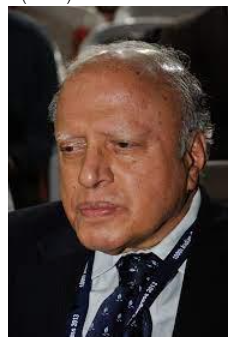
- Pamulaparthi Venkata (P. V.) Narasimha Rao
- 9th Prime Minister of India (1991-1996), posthumously awarded the Bharat Ratna.
- Reset India’s foreign policy, improved ties with the United States, and established relations with Israel.
- Upheld national independence by maintaining India’s right to pursue its nuclear strategy.
- Initiated economic liberalization and resurgence through LPG reforms in 1991, opening up the economy to globalization, reducing trade barriers, and initiating privatization.
- Published ‘SahasraPhan,’ a Hindi translation of the famous Telugu Novel ‘Veyi Padagalu.’
- Enacted the 73rd and 74th Constitutional Amendments Acts, mandating one-third reservation for women in Panchayati Raj institutions and urban local bodies.
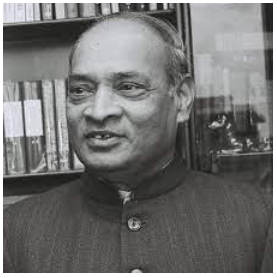
- Lal Krishna Advani
- Served as the 7th Deputy Prime Minister of India (1999-2004) and long-time President of the Bharatiya Janata Party.
- Acknowledged for intellectual acumen, strong principles, and steadfast support for a strong and prosperous India.
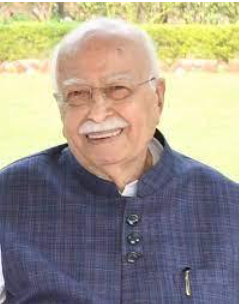
- Chaudhary Charan Singh
- 5th Prime Minister of India and former Chief Minister of Uttar Pradesh.
- Played a crucial role in abolishing the zamindari system in Uttar Pradesh in 1952 as the agriculture minister.
- Advocated for peasant rights and introduced measures to improve their conditions and welfare.
- Embraced Mahatma Gandhi's non-violent struggle for independence and was imprisoned several times.
- Promoted democratic values, secularism, and social justice.
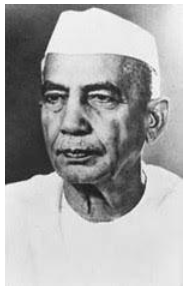
|
UPSC Previous Year Questions Prelims (2021) Q. Consider the following statements in respect of Bharat Ratna and Padma Awards:
Which of the above statements are not correct? (a) 1 and 2 only Ans: (d) |
Source: TH
APAAR: One Nation One Student ID Card
In News: In New Delhi, a recent National Conference on APAAR, centered around the theme "One Nation One Student ID Card," took place.
Understanding APAAR
- Overview
- APAAR, which stands for Automated Permanent Academic Account Registry, is a specialized identification system designed to cover all students in India from an early age.
- It aligns with the National Education Policy (NEP) of 2020 and the National Credit and Qualifications Framework (NCrF).
- While the registration for an APAAR ID is voluntary, it is not mandatory.
- Objective
- The primary objective of APAAR is to streamline and enrich the academic experience of students across India.
- It accomplishes this by assigning a unique and permanent 12-digit ID to each student, consolidating their academic records into a single accessible platform.
- This initiative is not just a tool for tracking the educational progress of 260 million students in India; it is also positioned as an aspirational and globally recognized document for students.
Key Benefits
- Accountability and Transparency
- APAAR ensures accountability and transparency in education by tracking student progress and consolidating academic records.
- Efficiency and Fraud Prevention
- It enhances efficiency, combats fraud, and includes co-curricular achievements for holistic student development.
- Support for Data-Driven Decision-Making
- With multiple use cases, APAAR facilitates a smooth transfer process and supports data-driven decision-making in educational institutions.
- Employability
- It enables students to easily share their academic records for enhanced access to employment opportunities.
Concerns and Considerations
- Privacy Concerns
- Consolidating academic records into a centralized database raises concerns about the privacy and security of student data.
- Robust security measures are essential to address potential risks of identity theft or fraudulent activities.
- Digital Divide
- There is a risk that students from marginalized or remote communities may face unequal access to digital platforms, potentially widening existing educational disparities.
Related Concepts
- Academic Bank of Credits (ABC)
- As per NEP 2020, the Academic Bank of Credits is envisioned to facilitate the academic mobility of students, allowing them the freedom to study across educational institutions in the country with an appropriate "credit transfer" mechanism from one program to another.
- The APAAR ID ensures seamless data transfer within the ABC when a student changes schools.
- DigiLocker
- DigiLocker is a cloud-based platform under the Digital India program, enabling users to digitally store, issue, and verify documents and certificates.
- Issued documents in the DigiLocker system hold the same status as original physical documents, as per Rule 9A of the Information Technology (Preservation and Retention of Information by Intermediaries providing Digital Locker facilities) Rules, 2016.
Source: PIB
SC Strikes Down Electoral Bonds Scheme
In News: The Supreme Court (SC) recently declared the electoral bonds scheme unconstitutional, citing it as a method allowing anonymous donations to political parties.
About the Judgement
- The Supreme Court emphasized the importance of transparency in funding political parties for informed electoral decisions.
- It stated that the Electoral Bonds scheme infringes upon the right to information as outlined in Article 19(1)(a).
- Electoral Bonds are financial instruments serving as promissory notes or bearer bonds, specifically designed for contributing funds to political parties in India.
- The State Bank of India (SBI) is the sole authorized bank to issue and encash electoral bonds.
- Donations made under this scheme enjoyed a 100% tax exemption.
- The Supreme Court issued a directive to the State Bank of India, instructing it to cease the issuance of electoral bonds immediately.
- The SBI is required to submit all details related to electoral bonds to the Election Commission by 6th March 2024.
Source: TH
Kaji Nemu
In News: The Assam government recently designated the GI-tagged ‘Kaji Nemu’ (Citrus Limon) as the official State Fruit.
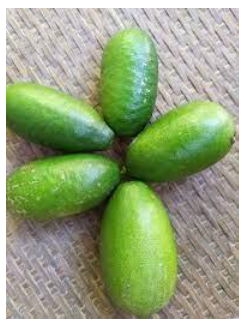
About Kaji Nemu: Assam's Unique Lemon Variety
- Distinctive Characteristics
- Elongated and oblong compared to other lemon varieties.
- Popular for its unique aroma and health benefits.
- Traditionally associated with Assamese cuisines.
- Global Presence
- Exported to several countries, including the Middle East.
- Aromatic Contribution
- Enriches local cuisines with its unique aroma and antioxidant properties.
- Oval-shaped Kaji Nemu is notably juicier than other lemon varieties.
- Utilization
- Primarily used in culinary and commercial purposes.
- Extensively employed for its medicinal properties.
- Cultivation
- Grown in almost all districts of Assam.
- Available throughout the year.
- Nutrient Powerhouse
- Rich in nutrients, contributing to overall health.
- Citrus Diversity in Assam
- Assam boasts 16 species and 52 varieties/hybrids of citrus.
- Geographical Indication (GI) Tag
- Awarded the GI tag in 2019, solidifying its link to Assamese food culture.
Source: IE
Pallava Dynasty
In News: In Tamil Nadu, near Ulundurpet, archaeologists have recently unearthed a Kotravai sculpture from the eighth century, providing a valuable artifact from the Pallava period.
Overview of the Pallava Dynasty
- Period of Existence: The Pallava Dynasty held prominence in South India from the 3rd to the 9th centuries.
- Territorial Rule: They governed the northern regions of Tamil Nadu, portions of Karnataka, Andhra Pradesh, and Telangana, establishing Kanchipuram as their capital.
- Religious Patronage: The Pallavas were patrons of Buddhism, Jainism, and the Brahminical faith. They actively supported music, painting, and literature.
- Origin and Autonomy
- Initially, the Pallavas were vassals under the Andhra Satavahanas.
- They gained autonomy following the decline of the Andhra Satavahanas at Amaravati.
- The Pallavas progressively moved southward, founding their capital in Kanchipuram during the 4th century CE.
- Notable Rulers and Prosperity
- The reigns of Mahendravarman I (571 - 630 CE) and Narasimhavarman I (630 - 668 CE) witnessed an increase in the wealth and power of the Pallava realm.
- Hiuen Tsang, the Chinese traveler, depicted Bodhidharma, the Chan (Zen) Buddhism initiator in China, as a Pallava prince.
- Architectural Contributions
- Renowned for Dravidian architecture, the Pallavas played a crucial role in the shift from rock-cut structures to stone temples.
- Significant architectural achievements at Mahabalipuram, which became a center for art, architecture, and literature.
- Key temples include the Kailasanatha Temple and the Shore Temple, the latter constructed by Narasimhavarman II.
- Kailasanatha and Vaikuntaperumal temples are particularly celebrated for their architectural excellence.
- Religious Affiliation
- The Pallavas embraced Shaivism, adopting the local religion and contributing to the Dravidian cultural identity.
- Conflicts and Battles
- Engaged in persistent conflicts with the Chalukya Dynasty in the north and Tamil kingdoms of Chola and Pandyas in the south.
- The Pallavas confronted the Chalukyas of Badami and were eventually absorbed by the Chola kings in the 8th century CE.
- Decline
- The ascendancy of the Rashtrakutas marked the decline of the Pallava Dynasty.
- Vijayalaya, the Chola King, decisively defeated Aparajitavarman, the last Pallava King, in 897 AD.
Source: IE
Baltic Sea
In News: Archaeologists in Germany have uncovered a Stone Age wall beneath the Baltic Sea, considered to be the oldest megastructure constructed by humans in Europe.
'
Baltic Sea: A Snapshot
- Geographical Location
- Situated in Northern Europe, the Baltic Sea is a semi-enclosed inland sea.
- An extension of the North Atlantic Ocean, it stretches northward from southern Denmark, nearly reaching the Arctic Circle.
- Separates the Scandinavian Peninsula from the rest of continental Europe.
- Coastline and Countries
- The coastline spans approximately 8,000 km and is shared by multiple countries, including Sweden, Poland, Lithuania, Latvia, Finland, Estonia, Germany, Denmark, and Russia.
- Size and Dimensions
- Covers an area of about 377,000 sq.km.
- Length is approximately 1,600 km, and width is around 193 km.
- Connectivity
- Connected to the White Sea through the White Sea Canal.
- Links to the North Sea’s German Bight via the Kiel Canal.
- Connects to the Atlantic Ocean via the Danish Straits.
- Major Gulfs
- Features three significant gulfs: the Gulf of Bothnia to the north, the Gulf of Finland to the east, and the Gulf of Riga slightly to the south.
- Brackish Inland Water Body
- Often regarded as the world’s largest brackish inland water body.
- Lower water salinity compared to the World Oceans due to inflow from surrounding land and shallow depths.
- River Inflow
- Over 250 rivers and streams discharge into the Baltic Sea.
- The Neva, the largest river in this context, flows into the Baltic Sea.
- Islands and Archipelagos
- Home to more than 20 islands and archipelagos.
- Gotland, situated off the coast of Sweden, stands as the largest island in the Baltic Sea.
Source: HT
What is Cassini Spacecraft?
In News: Recent data analysis from NASA's Cassini spacecraft indicates the existence of an expansive ocean beneath the frozen crust of Saturn's moon Mimas.
Cassini-Huygens Space Mission: Unveiling Saturn's Secrets
- Launch and Consortium
- The Cassini-Huygens mission was a collaborative effort involving NASA, the European Space Agency (ESA), and the Italian Space Agency (ASI).
- Launched on October 15, 1997, the spacecraft aimed to explore Saturn and its moon Titan.
- Spacecraft Overview
- The mission featured NASA's Cassini orbiter and ESA's Huygens probe.
- Cassini, weighing 2,125 kg (4,685 pounds), became the first spacecraft to orbit Saturn.
- Huygens, a disk-shaped probe weighing 349 kg (769 pounds), was designed to land on Titan.
- Dimensions and Instruments
- Cassini orbiter dimensions were 6.7 meters (22 feet) in length and 4 meters (13 feet) in width.
- Instruments included radar for mapping Titan's surface and a magnetometer to study Saturn's magnetic field.
- Huygens probe, mounted on Cassini, carried six instruments to study Titan's atmosphere and surface.
- Mission Highlights
- Cassini orbited Saturn from 2004 to 2017, completing 294 orbits and providing crucial insights.
- It extensively studied Saturn's atmosphere, rings, and their interactions with the planet's moons.
- The mission discovered six new moons and identified Enceladus and Titan as potential sites for exploring extraterrestrial life.
- Legacy and Scientific Contributions
- Cassini-Huygens significantly advanced our understanding of Saturn's complex system, enriching planetary science.
- The mission's findings continue to influence research on planetary atmospheres, magnetospheres, and astrobiology.
Source: BT
Daily News Paper Snippets - 16th February 2024
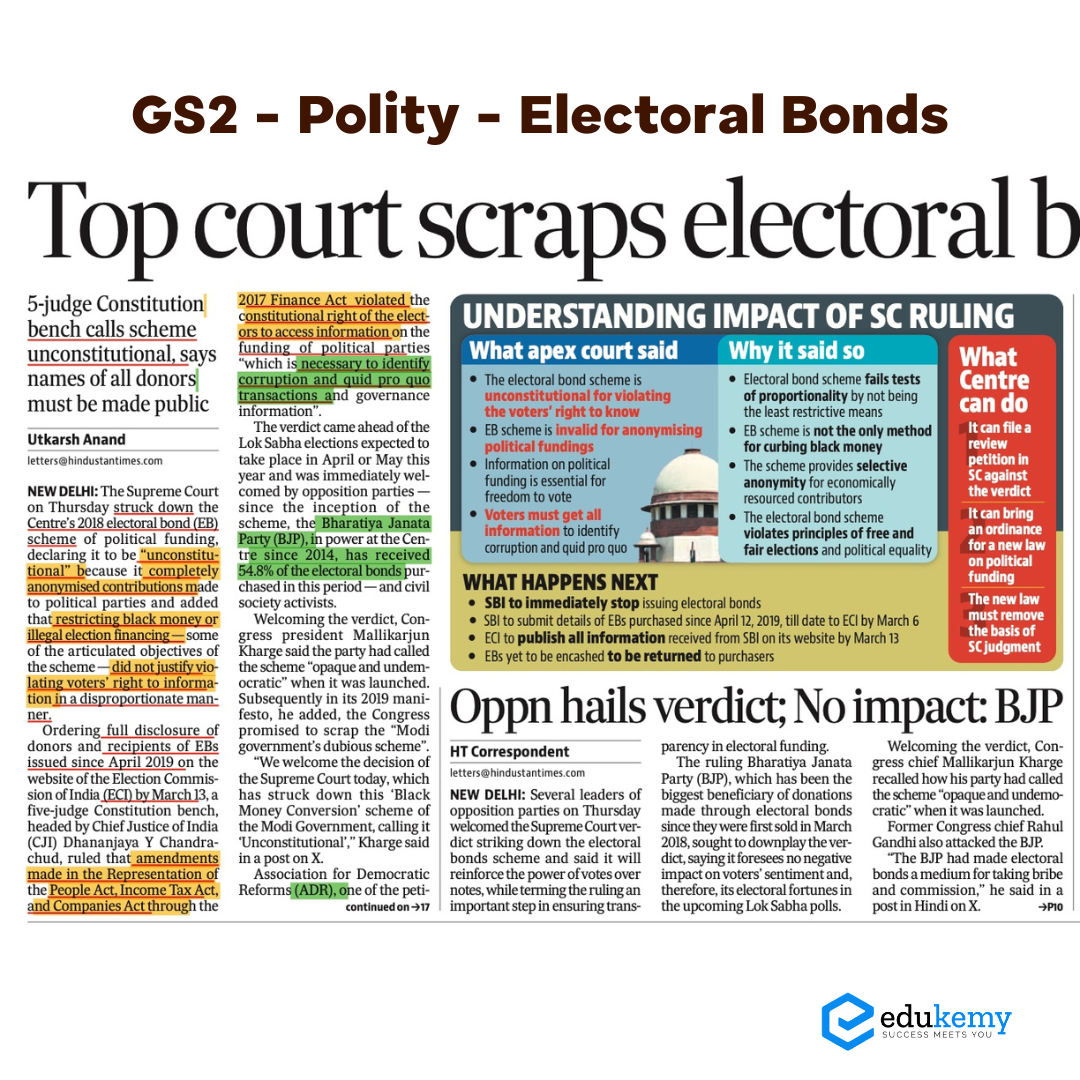
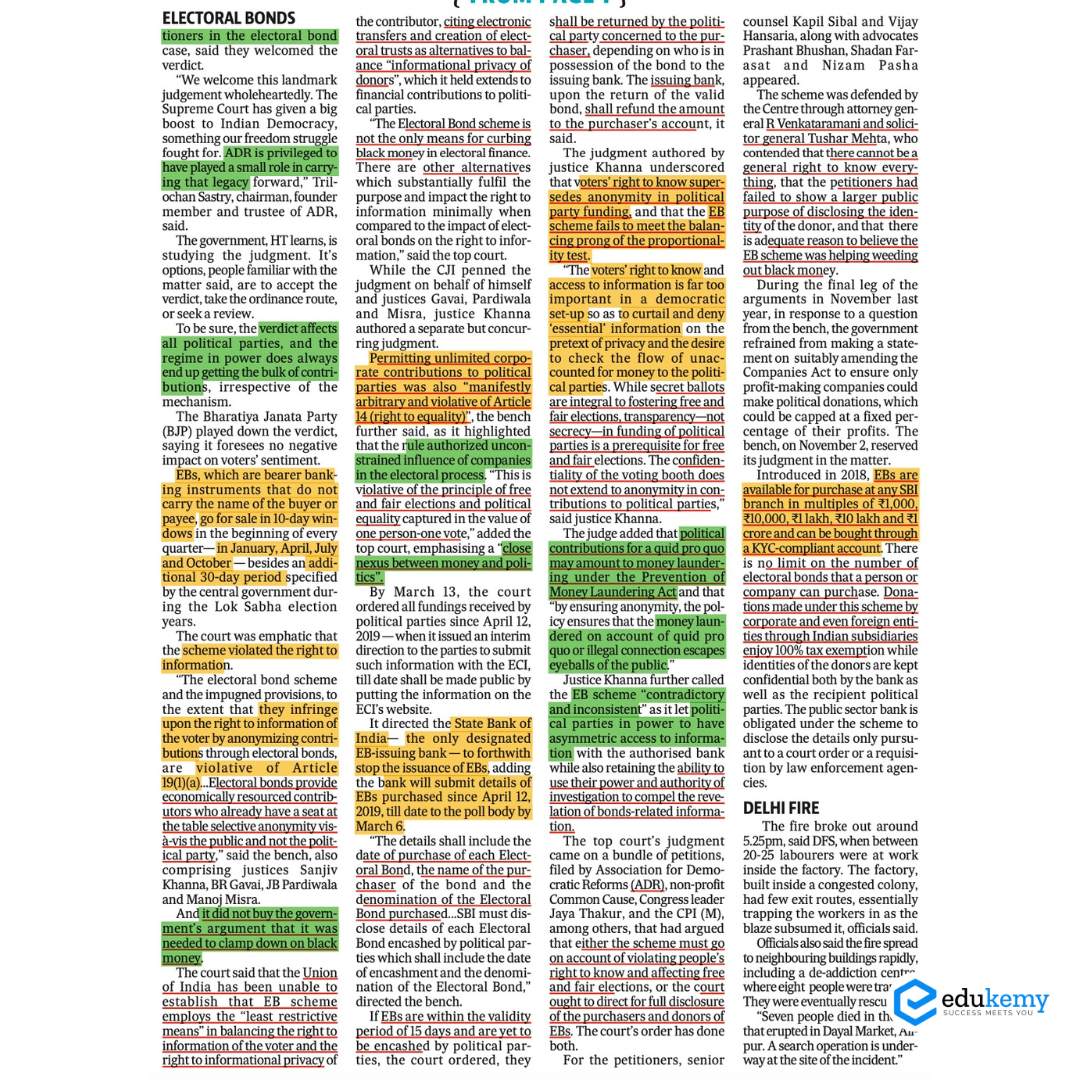

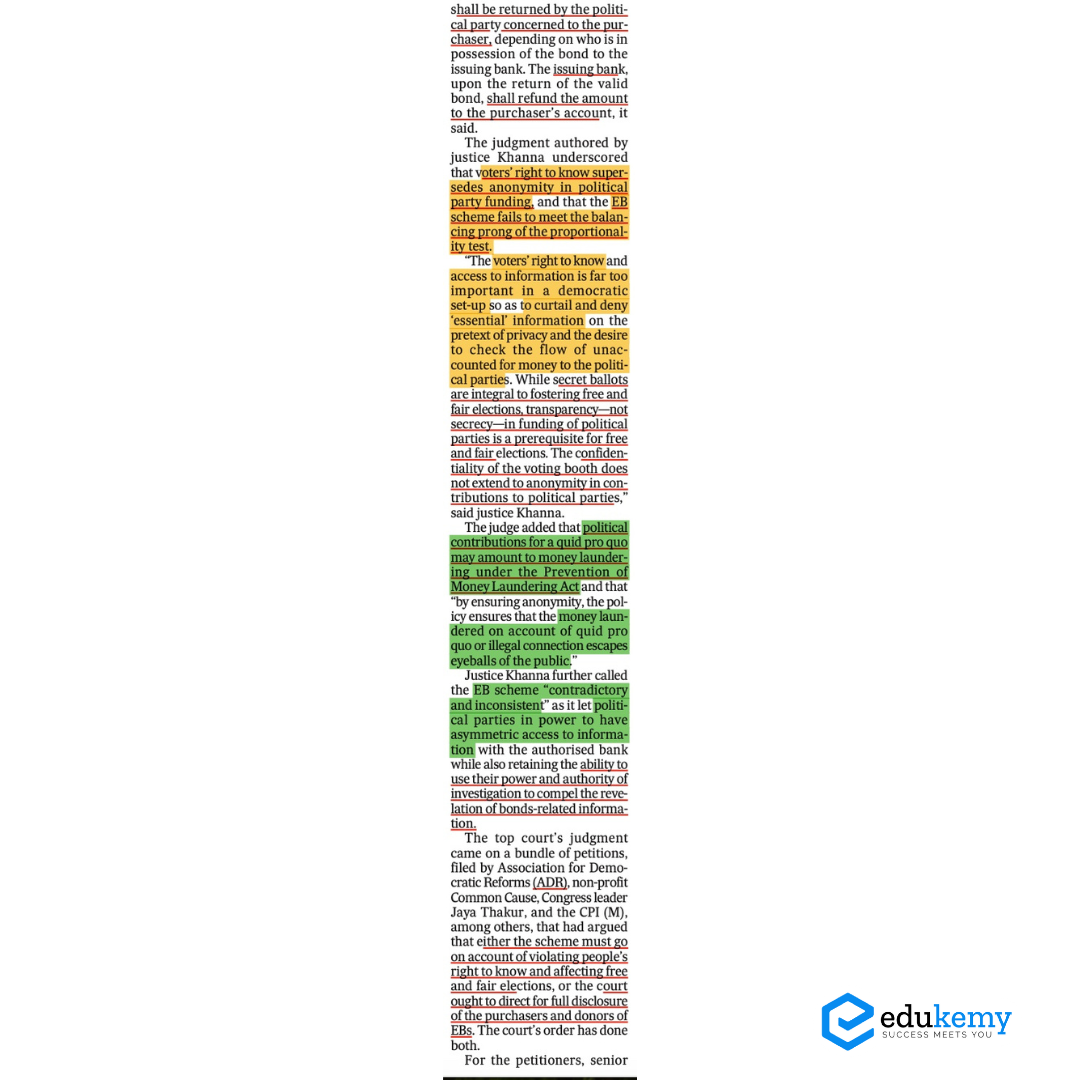
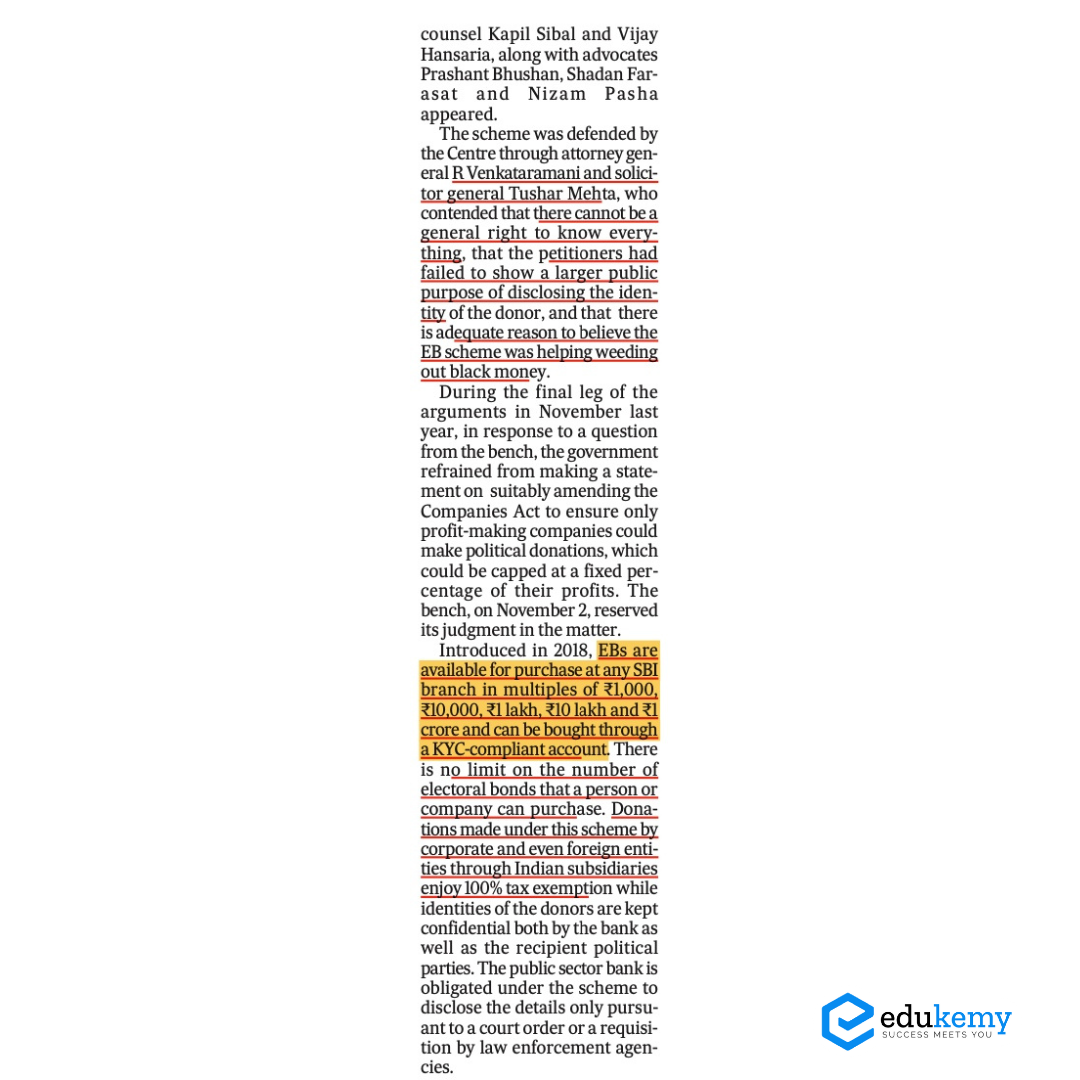

Dilemmas Surrounding Paid Menstrual Leave
In News: A recent article delves into the significance of promoting awareness about menstruation in light of the insufficient representation of women across different fields.
Challenges of Introducing Paid Menstrual Leave
- Deterrence to Women's Employment
- The widening gender gap, as reported by the World Economic Forum in 2021, indicates challenges in achieving gender equality.
- The current global scenario suggests it would take 135.6 years to bridge gender disparities, with women earning 84 cents for every dollar earned by men.
- Mandatory paid leave for menstruation may discourage companies from hiring women, exacerbating existing gender imbalances.
- Validation of Menstrual Stigma
- Ratifying 'special status' for menstruating women can perpetuate societal taboos around menstruation, reinforcing period shaming.
- Despite intentions to raise awareness, it may inadvertently magnify the existing stigma, potentially widening the gender gap.
- Lessons from Japan's Experience
- In countries like Japan, where leave for painful menstruation exists but is mostly unpaid and underutilized, women may fear disclosing their period status due to concerns about sexual harassment.
- The case of Japan, slipping in gender equality rankings, highlights the complex relationship between menstrual leave and gender disparities.
- Concerns in Implementation
- Introducing paid leave for menstruation poses challenges in determining legitimate usage and preventing potential misuse.
- Ensuring sensitive and respectful policies is crucial, considering incidents like the 2020 case in Bhuj, Gujarat, highlighting the need for appropriate enforcement methods.
Arguments Supporting Paid Menstrual Leave
- Addressing Period Poverty
- Lack of awareness about menstrual hygiene, particularly in rural areas, contributes to period poverty.
- Limited access to affordable sanitary products and inadequate knowledge about menstruation affect girls and women, leading to the use of homemade absorbents.
- Limited Access to Sanitary Products
- The National Family Health Survey highlights the continued reliance on cloth for menstrual protection by 50% of women aged 15 to 24.
- Economic challenges, especially for women from low-income backgrounds, make it difficult to afford sanitary pads or tampons.
- Stigma and Shame
- Persistent social stigma and cultural taboos surrounding menstruation contribute to discrimination and isolation of menstruating women.
- The reluctance to purchase pads due to embarrassment, along with societal attitudes, hinders open discussions about menstrual hygiene.
- Inadequate Sanitation Facilities
- Lack of proper sanitation facilities, especially in informal work settings, poses a significant barrier to menstrual hygiene.
- Insufficient infrastructure in schools and public places affects women's ability to manage their periods safely and with dignity.
- Limited Healthcare Services
- Shortages of healthcare providers trained in addressing menstrual health issues in rural areas hinder women's access to quality healthcare.
- Misconceptions about menstruation persist due to inadequate healthcare infrastructure.
- Cultural and Religious Practices
- Certain cultural and religious beliefs impede menstrual hygiene, restricting the participation of menstruating women in various activities.
- Practices like segregating menstruating girls to 'period huts' without proper facilities affect sexual and reproductive health outcomes.
- Lack of Policy Measures
- The delayed enactment of the 'Right of Women to Menstrual Leave and Free Access to Menstrual Health Products Bill' underscores the need for comprehensive policy measures.
- Currently, only Kerala and Bihar have menstrual leave policies for women.
Suggestions for Effective Menstrual Leave Policies
- Promoting Menstrual Health Literacy
- Ensure access to high-quality information about menstrual health for employers, employees, and healthcare providers.
- Incorporating Adequate Rest Breaks
- Emphasize the importance of rest breaks for all workers, reducing the likelihood of workplace injuries and illnesses.
- Access to Effective Treatment
- Provide access to emergency period products and medical support for severe symptoms to enhance workplace well-being.
- Flexible Working Conditions
- Recommend greater flexibility in work practices, allowing workers to manage menstrual symptoms without taking a full day of leave.
- Not Adopting Sex-Specific Policies
- Design policies considering the needs of all employees, avoiding gender-specific measures that may inadvertently cause resentment.
- Ensuring Equal Wages and Job Opportunities
- Address gender pay gaps by promoting equal wages and job opportunities, addressing horizontal and vertical gender segregation.
- Adequate Standards for Working Conditions and Labour Rights
- Focus on improving global minimum labour standards, including work hours, fair wages, rest breaks, health and safety, sick leave, and equal opportunities.
Conclusion
While advocating for paid menstrual leave is well-intentioned, a more nuanced approach is necessary to avoid unintentional reinforcement of gender myths. The global gender gap report underscores persistent disparities, emphasizing the need for inclusive strategies to address menstrual challenges and promote gender equality.
|
UPSC Previous Year Questions Mains (2019) Q. What are the continued challenges for women in India against time and space? Mains (2013) Q. Male membership needs to be encouraged in order to make women’s organisations free from gender bias. Comment. |
Source: TH
Motivational Campaigns for School Enrollments - Case Study of the Day
Balrampur District Administration initiated the 'Padhe Balrampur, Badhe Balrampur' campaign, engaging officials, teachers, parents, students, and civil society members to raise awareness about the significance of quality education.
- Through motivational efforts, parents of unschooled children were encouraged to enroll them in schools, resulting in approximately 54,000 previously out-of-school students joining, accompanied by a significant boost in attendance rates.
- Similarly, Siddharthnagar District Administration launched the 'Main Saksham Hoon' campaign, specifically aimed at inspiring parents to send their children to schools.
- Schools actively involved parents in monitoring their child's performance, fostering a sense of inclusion in their education.

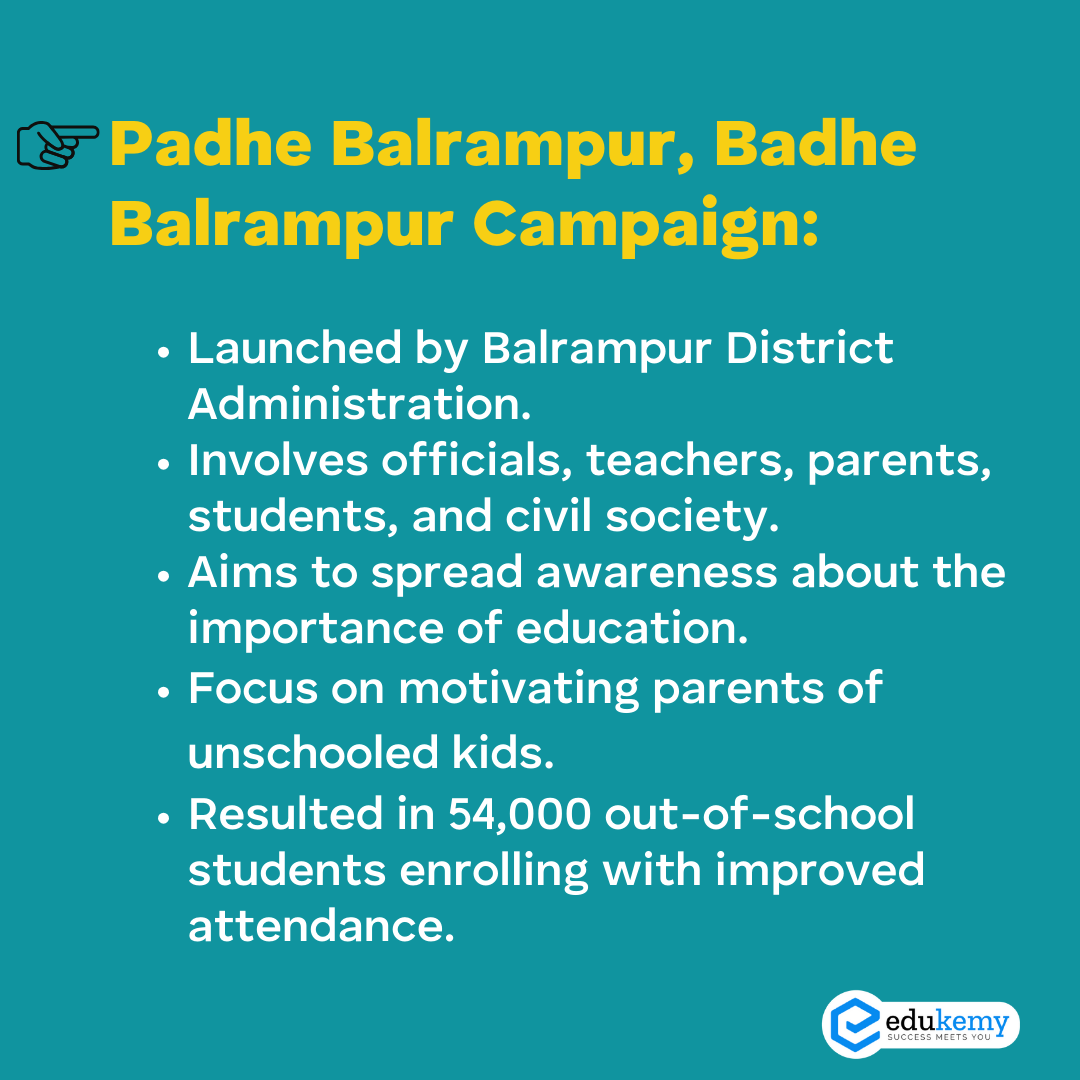
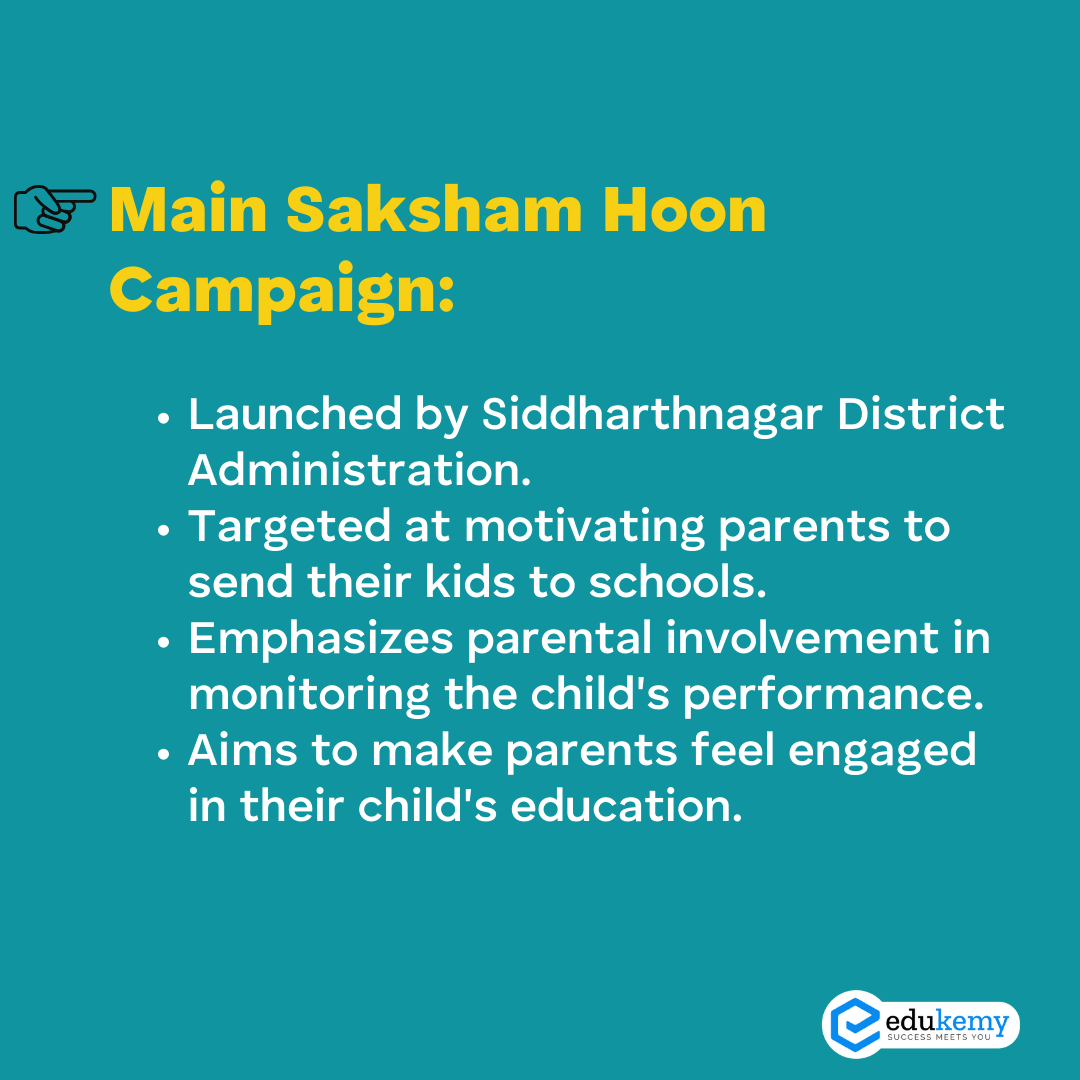
Share the article
Edukemy’s Current Affairs Quiz is published with multiple choice questions for UPSC exams
MCQ
Get Latest Updates on Offers, Event dates, and free Mentorship sessions.

Get in touch with our Expert Academic Counsellors 👋
FAQs
UPSC Daily Current Affairs focuses on learning current events on a daily basis. An aspirant needs to study regular and updated information about current events, news, and relevant topics that are important for UPSC aspirants. It covers national and international affairs, government policies, socio-economic issues, science and technology advancements, and more.
UPSC Daily Current Affairs provides aspirants with a concise and comprehensive overview of the latest happenings and developments across various fields. It helps aspirants stay updated with current affairs and provides them with valuable insights and analysis, which are essential for answering questions in the UPSC examinations. It enhances their knowledge, analytical skills, and ability to connect current affairs with the UPSC syllabus.
UPSC Daily Current Affairs covers a wide range of topics, including politics, economics, science and technology, environment, social issues, governance, international relations, and more. It offers news summaries, in-depth analyses, editorials, opinion pieces, and relevant study materials. It also provides practice questions and quizzes to help aspirants test their understanding of current affairs.
Edukemy's UPSC Daily Current Affairs can be accessed through:
- UPSC Daily Current Affairs can be accessed through Current Affairs tab at the top of the Main Page of Edukemy.
- Edukemy Mobile app: The Daily Current Affairs can also be access through Edukemy Mobile App.
- Social media: Follow Edukemy’s official social media accounts or pages that provide UPSC Daily Current Affairs updates, including Facebook, Twitter, or Telegram channels.

